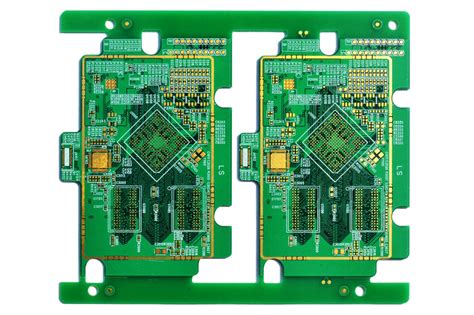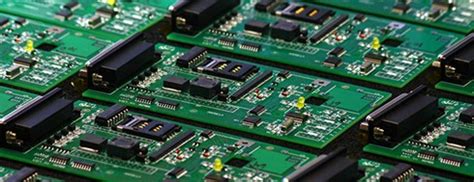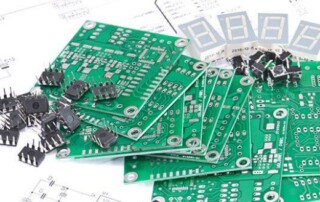Low-Energy PCB Manufacturing: Sustainable Practices for the Electronics Industry
Introduction
Printed Circuit Board (PCB) manufacturing has traditionally been an energy-intensive process with significant environmental impacts. As global awareness of climate change and resource depletion grows, the electronics industry faces increasing pressure to adopt more sustainable practices. Low-energy PCB manufacturing represents a crucial step toward reducing the carbon footprint of electronic devices while maintaining high quality and performance standards.
This article explores the various strategies, technologies, and methodologies being implemented to reduce energy consumption in PCB production. We will examine the entire manufacturing process from design to final assembly, highlighting innovations that contribute to energy efficiency while discussing the challenges and future directions of sustainable PCB fabrication.
The Energy Landscape of Traditional PCB Manufacturing
Understanding the Energy Demands
Conventional PCB manufacturing involves multiple energy-intensive steps:
- Substrate preparation and copper cladding
- Photolithography and imaging
- Etching processes
- Drilling and mechanical processing
- Plating and surface finishing
- Soldermask application
- Testing and quality control
Each of these stages requires substantial amounts of electricity for equipment operation, thermal processing, ventilation, and facility maintenance. Studies indicate that a typical PCB fabrication facility can consume between 500-1000 kWh per square meter of board produced, with particularly high energy usage in the etching, plating, and lamination processes.
Environmental Impact
The environmental consequences of this energy consumption are significant:
- High carbon emissions from electricity generation
- Water consumption for cooling and processing
- Chemical waste from energy-intensive processes
- Resource depletion from inefficient material usage
These factors have led manufacturers and researchers to develop alternative approaches that reduce energy requirements while maintaining product quality.

Key Strategies for Low-Energy PCB Manufacturing
1. Design Optimization for Manufacturing
Energy efficiency begins at the design stage through:
- DFM (Design for Manufacturing) principles: Creating layouts that minimize complex routing and reduce processing steps
- Layer stack optimization: Reducing unnecessary layers to decrease material and energy use
- Panel utilization improvements: Maximizing board placement on production panels to reduce waste
- Standardized component placement: Enabling more efficient assembly processes
Advanced EDA (Electronic Design Automation) tools now incorporate energy-aware design features that help engineers create boards requiring less energy to manufacture.
2. Material Innovations
New substrate materials offer significant energy savings:
- Low-temperature cure prepregs: Reduce lamination energy by 30-40%
- High-performance polymers: Enable thinner constructions with equivalent performance
- Recycled copper foils: Lower energy requirements compared to virgin copper production
- Bio-based substrates: Emerging materials with lower embodied energy
Material suppliers are increasingly offering “green” alternatives specifically developed to reduce energy consumption during PCB fabrication.
3. Process Optimization and Advanced Technologies
Dry Process Implementation
Traditional wet processes (etching, plating, cleaning) account for approximately 60% of a PCB factory’s energy use due to liquid heating, pumping, and treatment. Dry alternatives include:
- Laser direct imaging (LDI) replacing wet photolithography
- Plasma etching as an alternative to chemical etching
- Additive processes that deposit material only where needed
Energy-Efficient Equipment
Modern PCB manufacturing equipment incorporates numerous energy-saving features:
- Regenerative braking in drilling machines: Recovers energy during spindle deceleration
- High-efficiency motors and drives: Reduce baseline power consumption
- Advanced thermal management: Minimizes heat loss in ovens and lamination presses
- Smart standby modes: Automatically reduce power during idle periods
Process Control and Industry 4.0
The implementation of IoT sensors and AI-driven process control optimizes energy use by:
- Real-time monitoring and adjustment of energy-intensive parameters
- Predictive maintenance to prevent energy-wasting equipment conditions
- Adaptive scheduling to balance energy loads across production lines
4. Renewable Energy Integration
Leading PCB manufacturers are:
- Installing onsite solar arrays and wind turbines
- Purchasing renewable energy credits
- Implementing microgrid systems with energy storage
- Utilizing waste heat recovery systems
These approaches help decarbonize the energy used in production facilities.

Case Studies in Low-Energy PCB Manufacturing
Case 1: The HDI Factory Transition
A major Asian PCB manufacturer converted its HDI (High Density Interconnect) production line to low-energy processes, achieving:
- 35% reduction in total energy consumption
- 40% decrease in process water usage
- 28% lower carbon emissions
through implementation of laser drilling, direct metallization, and advanced wastewater treatment with energy recovery.
Case 2: European Flex PCB Specialist
A flexible circuit producer in Germany implemented a comprehensive energy efficiency program featuring:
- Solar thermal for process heating
- All-electric (no fossil fuel) production equipment
- Closed-loop water recycling
resulting in net-zero energy status for their flagship production line.
Case 3: North American Prototype Facility
A quick-turn PCB shop in the United States achieved 50% energy reduction through:
- Right-sized equipment for small batches
- LED UV curing replacing traditional drying ovens
- Advanced scheduling software to minimize machine idle time
Challenges in Implementing Low-Energy PCB Manufacturing
Despite the clear benefits, several obstacles remain:
Technical Limitations
- Some alternative processes cannot yet match the quality of traditional methods
- New materials may require different handling and processing parameters
- Equipment retrofits can be costly and disruptive
Economic Factors
- Higher upfront costs for energy-efficient equipment
- Need for workforce retraining
- Potential slower throughput with some new processes
Regulatory and Standards Issues
- Lack of uniform standards for “low-energy” PCB classification
- Varying regional regulations complicate global implementation
- Customer acceptance of alternative materials and processes
Future Directions and Emerging Technologies
The future of low-energy PCB manufacturing includes several promising developments:
Additive Manufacturing Approaches
- Fully additive PCB fabrication could reduce material waste by 90% and energy use by 60%
- Inkjet and aerosol jet deposition enable selective material application
- 3D printed electronics integrate components directly into structures
Room-Temperature Processes
- Novel chemical formulations that operate without heating
- Cold plasma surface treatments
- Ambient-cure adhesives and coatings
AI-Driven Optimization
- Machine learning models for energy-minimized process planning
- Digital twins to simulate and optimize energy use
- Autonomous adjustment of parameters in real-time
Circular Economy Models
- PCB designs optimized for disassembly and recycling
- Remanufacturing and refurbishment programs
- Chemical recovery and reuse systems
Conclusion
Low-energy PCB manufacturing represents both an environmental imperative and a competitive advantage in the electronics industry. Through design innovation, material science advancements, process optimization, and renewable energy integration, manufacturers can significantly reduce the energy footprint of PCB production while maintaining quality and performance standards.
The transition to sustainable PCB fabrication requires collaboration across the supply chain—from material suppliers to equipment manufacturers to end users. While challenges remain, the technological and methodological innovations discussed in this article demonstrate that substantial energy reductions are achievable with current technologies, with even greater savings possible as emerging approaches mature.
As consumer and regulatory pressures for sustainable electronics grow, companies that invest in low-energy manufacturing capabilities will position themselves as leaders in the green electronics revolution. The PCB industry’s energy transformation not only benefits the environment but also drives operational efficiencies that can improve profitability and market positioning in an increasingly sustainability-conscious marketplace.







